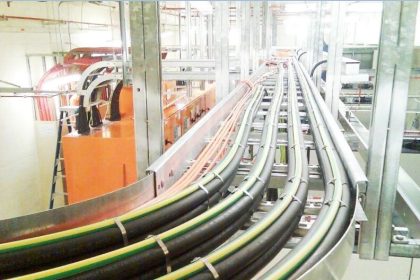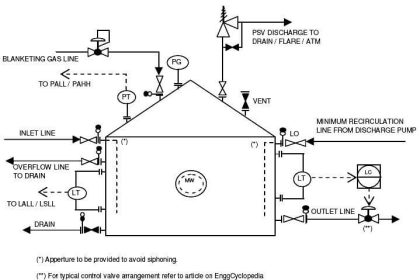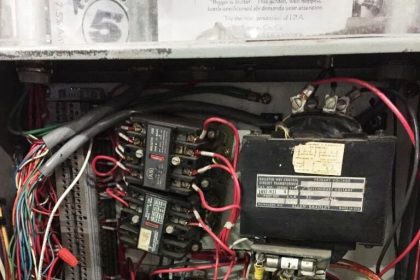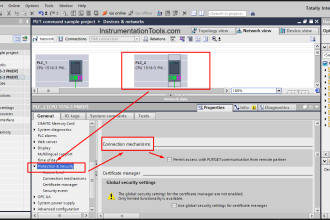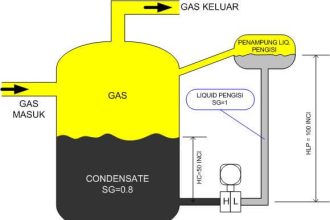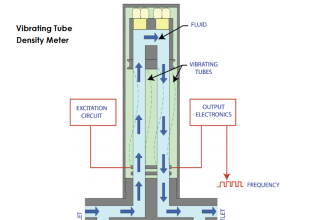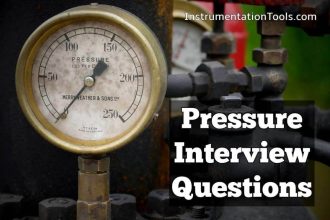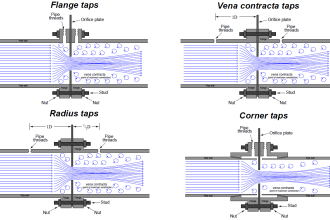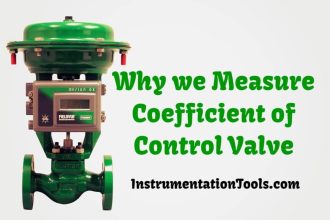Installation of a Control Valve
When installing a control valve, please observe the following:
- Before installation, ensure that scales, welding chips or any other foreign materials have been cleaned out of the process pipe to which the control valve is to be connected.
- While installing the control valve ensure the process fluid flow direction matches with the flow direction indicated on the connecting flanges of the valve body.
- Install the control valve, in a position such a position that its actuator is positioned vertically.
- Exercise caution so that no edges of the gaskets connecting the pipe extrude into the process pipe. Make sure the selected gasket material is suitable for the process fluid.
- Take adequate measures to avoid applying large force to the control valve by the process piping. Take care when tightening flange bolts to avoid biased tightening which may cause undesirable mechanical stress.
- After installing the control valve and before connecting the air pipe to the actuator, below the air tube with clean compressed air to remove dust and other foreign material from inside the air pipe.
- Sufficient space shall be provided above the actuator for its removal.
- Install the control valve in a place where the ambient temperature does not exceed the specified temperature limit of the actuator.
- Check that the actuator pointer, positioner and manual handwheel (if provided) are installed in the correct direction.
To change the mounting direction of the actuator, proceed as follows: Apply a pneumatic pressure of approximately 60 kPa (0.6 kgf / cm2) to the diaphragm so that the valve lift is set at a mid-position of its range. Loosen the yoke clamp nut with a wrench Swivel the overall actuator to the correct position, and then securely tighten the yoke clamp nut with a wrench. Release the pneumatic pressure applied to the diaphragm. In case of a control valve that has a bellows seal, how- ever, disconnect the actuator stem from the valve stem and then loosen the yoke clamp nut and swivel the actuator section.
Inspection and Maintenance of Control Valves
Inspection Before Starting Operation
Before starting operating of the control valve, check & confirm the following to ensure all conditions are correct and secure.
- Confirm that the flow direction marked on the control valve conforms with the process fluid flow direction.
- Confirm that the bolts and nuts of the diaphragm are securely tightened.
- Confirm that bonnet clamp bolts are securely tightened.
- Confirm that the yoke clamp bolt is securely tightened.
- Confirm that the clamp bolts of any accessory devices (positioner, regu- lator valve, etc.) are securely tightened.
- Confirm that the air connection to the actuator is securely tightened and there is no air leak.
- Confirm that the bolts of the stem connector that connect the actuator stem to the valve stem are securely tightened.
- Confirm that the actuator stem and valve stem are not warped or show any other sign of defect.
- Confirm that the control valve smoothly operates within its full lift scale range.
- Confirm that the actuator spring is correctly compressed.
- Confirm that gland packing bolts are sufficiently tightened.
- If the control valve employs asbestos packing, it is recommended to lubricate it with the lubricator.
- If the control valve has a manual handwheel, check that the pointer of the operation nut is at AUTO position and the handwheel is locked.
Periodical Inspection and Maintenance
Periodically inspect and perform maintenance service to the control valve for the following:
- Check that there is no air leak from between the diaphragm case and diaphragm.
- Check that there is no process fluid leak from the bonnet and flanges.
- Check that the yoke clamp bolt is not loose.
- Check that there is no air leak from the air piping of the actuator.
- Check that there are no loose bolts on the stem connector which connects the actuator stem to the valve stem.
- Check that the actuator stem and valve stem are not warped and show no sign of damage.
- Check that valve operation is smooth and valve lift is correct
- Check that the control valve does not generate any abnormal sound or vibration.
- Check that there is no leak from the gland packing section. If the control valve has a lubricator, periodically lubricate and tighten the gland packing section.
- If the Control valve has a manual handwheel, check that the pointer of the operation nut conforms with the AUTO position and that the hand- wheel is locked.
Control Valve Adjustment
Generally the diaphragm control valve does not require adjustment. However, when it is disassembled and reassembled for overhaul or parts replacement, adjustment should be made as described below:
Lift Adjustment
a. For direct acting actuators:
Connect the air tubing to the diaphragm chamber while the stem connector is disen- gaged to supply compressed air to the chamber.
Push down the valve stem and make the valve plug touch on the valve seat.
Next, apply air pressure up to 5~10% (min. 1%) of the rated lift (check name plate for lift rate) from the reference position of no air in the chamber then fix the pressure at this position. The index on the scale should be set at SHUT at this point.
Connect the actuator stem to the valve stem with the stem connector.
Increase air pressure to the diaphragm chamber and verify the valve lift is more than the rated lift range and the valve seat and plug touch each other. Make sure that this contact takes place while in the SHUT position.
b. For reverse acting actuators
Connect the air tubing to the diaphragm chamber while the stem connector is disen- gaged to supply compressed air to the chamber.
Push down the valve stem and make the valve plug touch on the valve seat. Apply air pressure to the diaphragm chamber until the actuator stem stops.
Next, reduce the pressure in the diaphragm chamber until the lift is 5~10% above the rated lift range (min. 1 mm) then fix the pressure at this position. The index on the scale should be set at SHUT at this point.
Connect the actuator stem to the valve stem with stem connector at this position. Reduce the air pressure to the diaphragm chamber and verify if the valve lift is more than the rated lift range (min. 1 mm) and the valve seat and plug touch each other.
Make sure that this contact takes place while in the SHUT position.
Spring Compression Adjustment
This adjustment must be made after lift adjustment.
a. Direct acting actuator
Connect air tubing to the diaphragm chamber to supply compressed air.
Apply low end of the pressure as specified on the name plate to the diaphragm chamber, and adjust by tightening the spring to ensure that the index on the scale starts to move below OPEN; and when the higher end pressure is applied to the diaphragm chamber, the index shows SHUT.
Tightening of spring adjuster can be made easily with no air pressure to the diaphragm chamber.
b. Reverse acting actuator
Connect air tubing to the diaphragm chamber to supply compressed air
Apply low end of the pressure as specified on the name plate to the diaphragm chamber, and adjust by tightening the spring to ensure that the index on scale starts to move beyond SHUT, and when higher end pressure is applied to the diaphragm chamber, the index shows OPEN.
Tightening of spring adjuster can be made easily with no air pressure to the diaphragm chamber.
